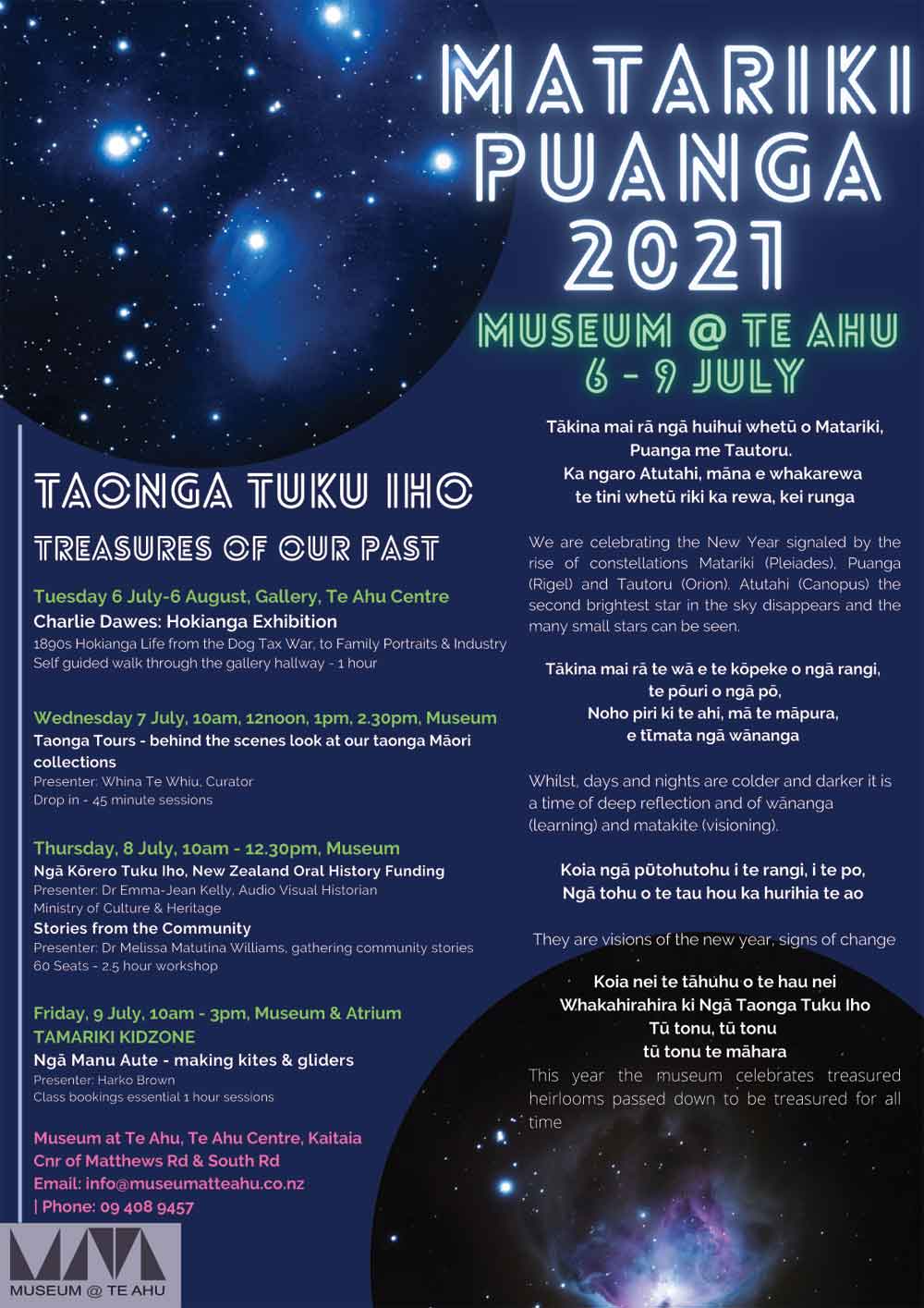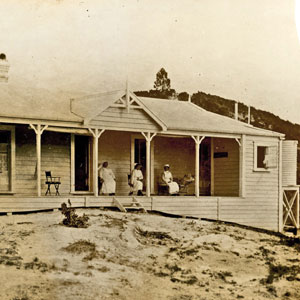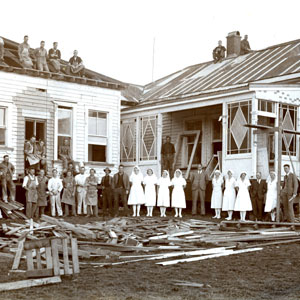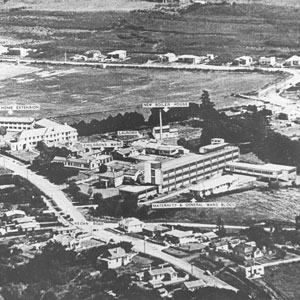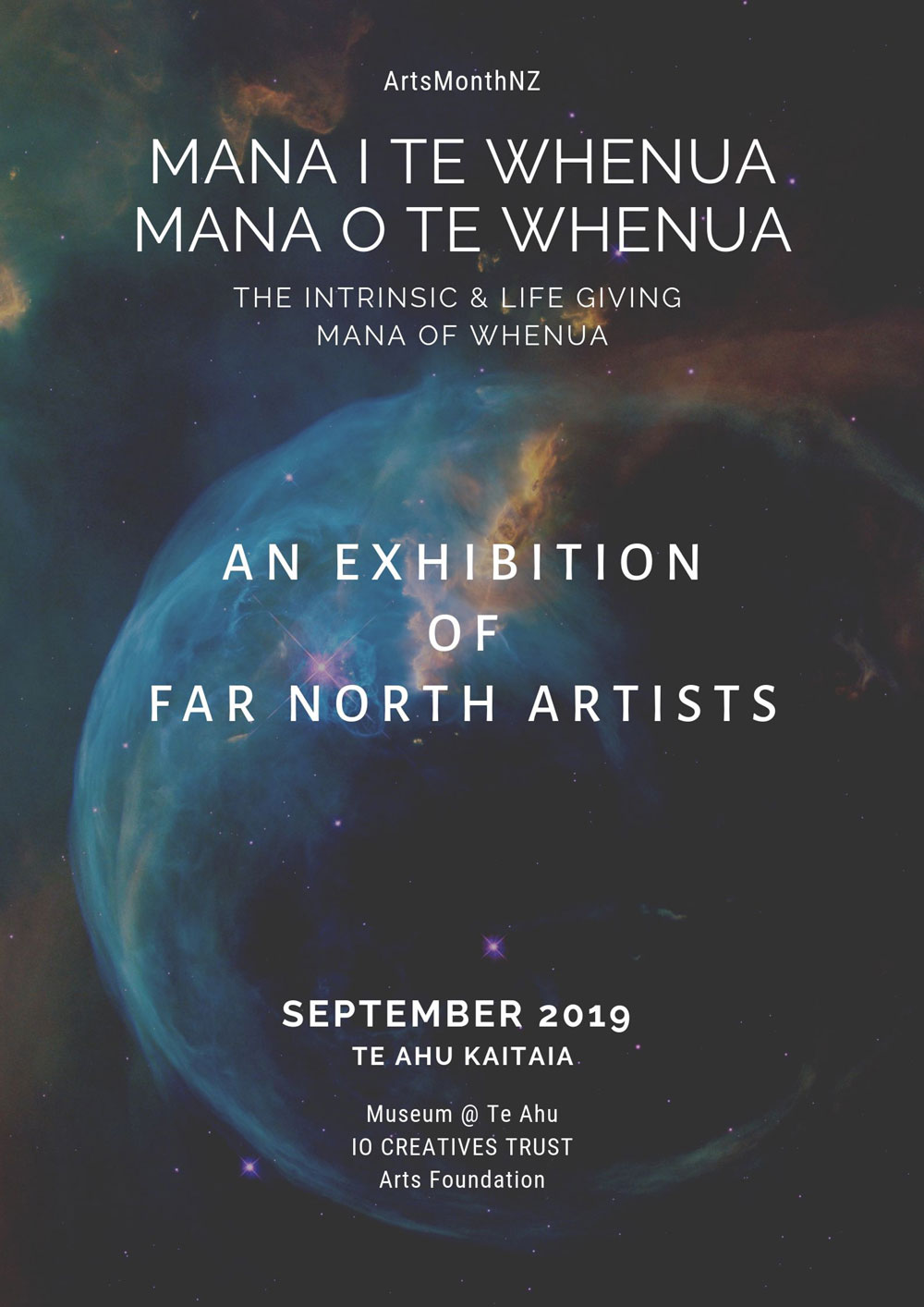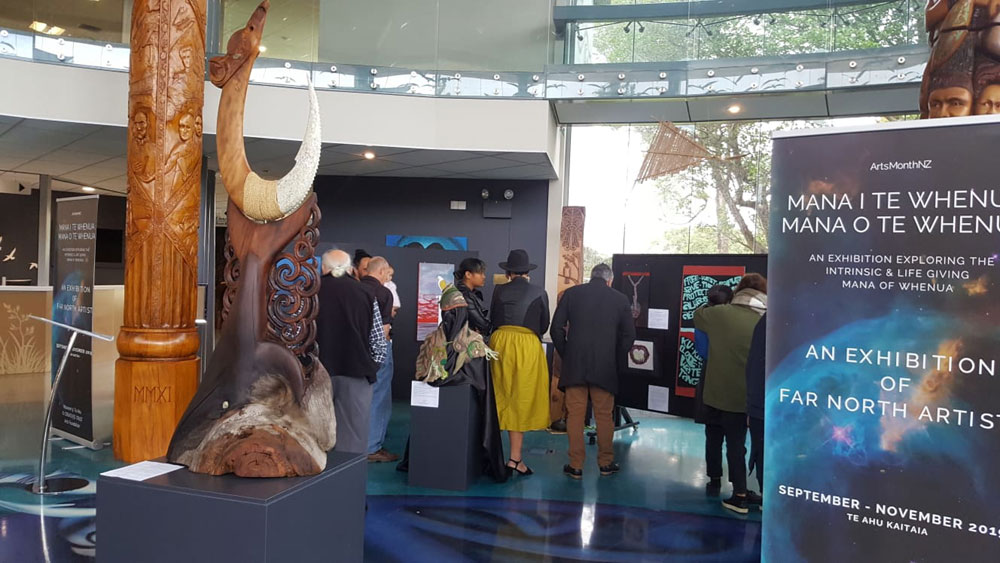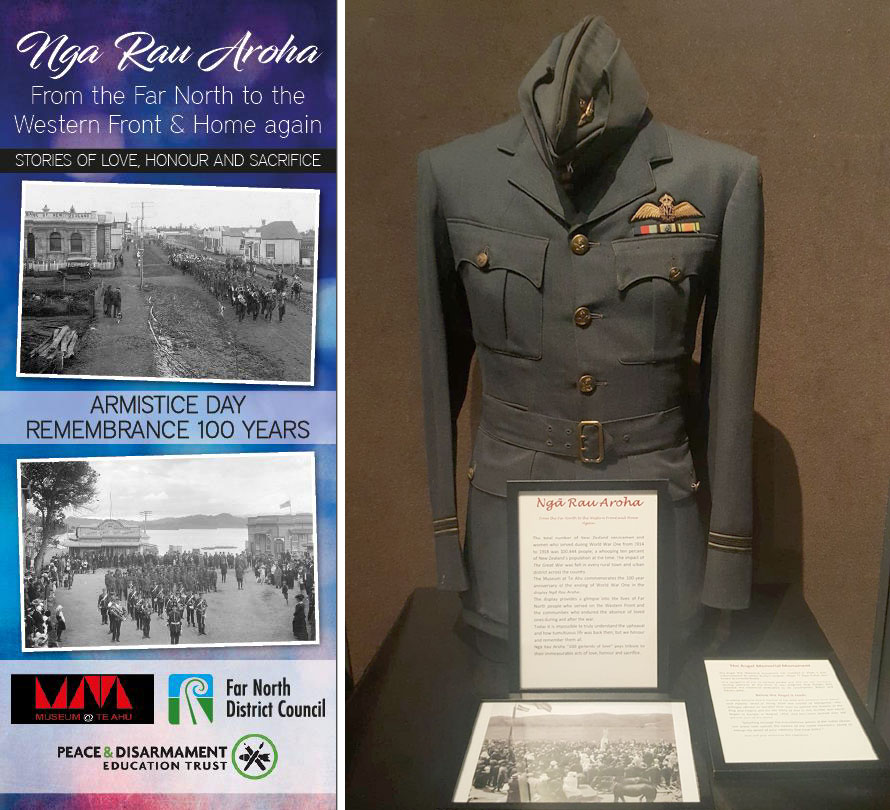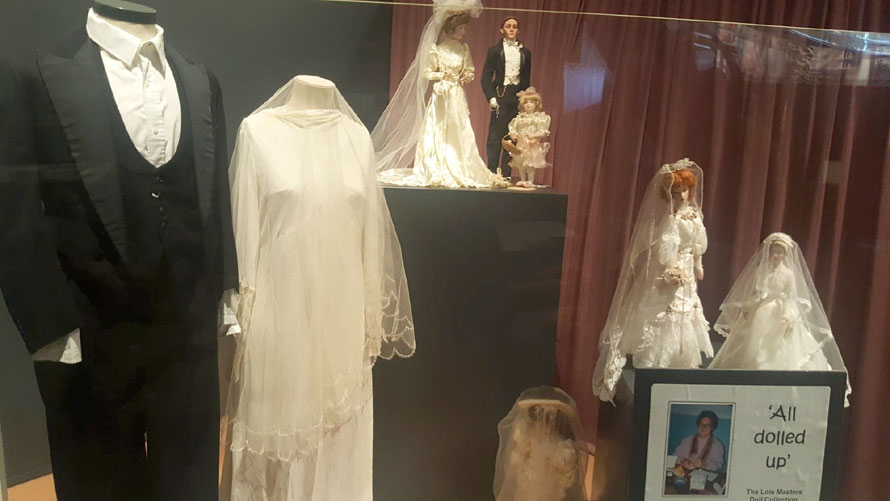What's on
NEW EXHIBITION: CABINET OF CURIOSITY
From 17 January 2022
There is a great new exhibition coming to Museum @ Te Ahu.: It is called Cabinets of Curiosity, which features six new cases within the Museum, Te Ahu Centre and Library, displaying some of the quirkier objects from the Museum collections. Some of the labels attached to the objects are true, some are false but which is which? Is the Hamster Trainer & Feeder really what is says and do we actually have some Moa Coprolite (fossilised faeces) or Prototype Frisbees in the collection?
Come to the Museum after the 17th and find out.
MATARIKI PUANGA 2021 - 6 to 9 July 2021
We are celebrating the New Year signaled by the rise of constellations Matariki (Pleiades), Puanga (Rigel) and Tautoru (Orion). Atutahi (Canopus) the second brightest star in the sky disappears and the many small stars can be seen.
Tuesday 6 July-6 August, Gallery, Te Ahu Centre - Charlie Dawes Hokianga Exhibition
1890s Hokianga Life from the Dog Tax War, to Family Portraits & Industry Self guided walk through the gallery hallway - 1 hour
The large photographic collection of Charles Peet Dawes held by Auckland Libraries is important to New Zealand due to its high cultural and historical value especially highlighting the Hokianga Harbour district; it's people and environment. It is an important historical region which documents early contact and relationships between Māori and European settlers to New Zealand from the 1820s to present day. On display will be 46 images of Hokianga life in the 1890s giving audiences a taste of the richness of the Dawes collection. The Dawes Collection is part of the UNESCO NZ Memory of the World Register. The museum would like to thank Auckland Libraries for the photographic copies of the collection which will be held at the Museum@ Te Ahu as a repository for the Far North.
Wednesday 7 July, 10am, 12noon, 1pm, 2.30pm, Museum - Taonga Tours -
behind the scenes look at our taonga Māori collections
Presenter: Whina Te Whiu, Curator
Drop in - 45 minute sessions, limit to 10 people per session. We recommend booking for a session: email to [email protected] .
Māori oral traditions say that when the Polynesian explorer Kupe reached Aotearoa, his waka finally landed in the north. Soon after landfall they began establishing pā villages; and when numbers grew they spread right across the Far North making our district one of the richest in evidence of early Māori life.
In the museum is a wonderful taonga Māori collection from the region. People will be given a guided tour of the archive and storage area with the museums curator. In most cases, We hold some important items from early historic sites where Māori lived, played, fished and cultivated gardens. You will have a chance to engage taonga by touch while we share a yarn or two.
Thursday, 8 July, 10am - 12.30 pm, Museum - Ngā Kōrero Tuku Iho, New
Zealand Oral History Funding
Presenter: Dr Emma-Jean Kelly, Audio Visual Historian, Ministry of Culture
& Heritage
60 Seats - 1.5 hour workshop followed by Dr Melissa Williams. We recommend booking for this session: email to [email protected] .
This workshop is for people who may be interested in recording local stories and desire to learn about the Manatū Taonga Ministry for Culture and Heritage oral history awards, a total of $100,000 is dispersed per year between a number of recipients working on varied projects across the country.
Audio-Visual Historian, Dr Emma-Jean Kelly administers the awards and will deliver a talk about the funding application process with recent examples of funded projects and to answer questions from those interested in applying.
Stories from the Community
Presenter: Dr Melissa Matutina Williams
Dr Melissa Williams was awarded the EH McCormick Best First Book Award for General Non-Fiction at the 2016 Ockham New Zealand Book Awards for her book Panguru and the City.
A story of intersecting cultural and economic forces in the post-war period: the isolation of the Panguru district in the northern Hokianga, the demand for workers in the fast-growing post-war industries of Auckland, the emergence of a new generation of Māori leaders personified by Whina Cooper. Melissa will share her experience in recording hundreds of hours of stories for her book.
Friday, 9 July, 10am - 3pm, Museum & Atrium - TAMARIKI KIDZONE
Ngā Manu Aute - Making kites & gliders
Presenter: Harko Brown
Class bookings essential 1 hour sessions
Harko Brown is an expert of traditional Māori games who has written about their origins and traditions. Harko has been instrumental to revitalise the games in Aotearoa and show casing this taonga internationally for the last twenty years.
Harko will be showing tamariki how to build gliders and kites out of paper and natural materials. The hope is that tamariki will enjoy the games so much, that they will share their awesome glider and kite making skills with their friends and whanau.
OUR FAR NORTH HOSPITAL AND THE 1918 INFLUENZA PANDEMIC
A virtual exhibition during the COVID-19 Pandemic 2020
We briefly look at the establishment of the district hospital and we reflect on the impact of the 1918 influenza on the Far North.
Kauri timber for the building of the Mangonui County Hospital situated in the township of Mangonui, was donated by the Lane family in Totara North, and building started in 1906.
There were eight medical and eight surgical beds, an additional maternity area for four, both a men’s and women’s ward, theatre and x-ray room, matrons office, morgue and a house surgeon’s and service rooms.
The hospital was officially opened on the 8 February, 1907. Mangonui was the most populated place in the county at the time; however Kaitaia residents were opposed to the hospital being built there.
With the rise of the dairy industry in Kaitaia and the arrival of the Bell Brothers in 1914, the population growth and prosperity accelerated in Kaitaia and pressures to shift the hospital increased but to no avail.
In 1927, a small building was set up in Kaitaia for a hospital. However, a call to shift the district hospital in Mangonui arose again and eventually the hospital moved to Kaitaia in 1934.
1918 INFLUENZA PANDEMIC IN THE FAR NORTH
The global influenza pandemic of 1918 claimed many, many lives - approximately 20 million worldwide, about 9,000 being New Zealanders. European deaths were put at around 5,500 and Maori at 1,200.
The disease appeared to have been introduced to New Zealand by crew and passengers from the ship Niagara, which arrived at Auckland on 12 October 1918. Although cases were reported in Auckland before this, there were no deaths. There were no attempts to restrict travel and with the crowds meeting to celebrate Armistice on and after 11 November, the virus spread rapidly south and around the country.
Belatedly, shops were shut and theatres and schools closed. Trams stopped running for passengers. Instead trams, trains, trucks and cars were used for hearses. Clergymen became as overworked as doctors and nurses.
Women in the Northland region with nursing experience were asked to volunteer for service in the Auckland district, their travelling expenses paid and ten shillings a day was provided.
Little is known how the Far North coped as a whole district. In Kaitaia, it was recorded that there were 35 deaths by 28 November, mainly amongst Maori. Many of the deaths were due to poor sanitary conditions, and failure to take the minimum steps laid down to avoid contagion.
In the Hokianga district the numbers of deaths were higher with 167 registered deaths; 158 of them being Maori, and the Rawene Hospital was swamped.
The Acting Chief Health Officer telegraphed warnings to local bodies. Maori were prohibited from holding tangi, and by early December hapu leaders supported the prohibition and implored whanau members not to travel from Auckland to Northland and gather for tangihanga (Maori funeral rites and rituals).
Kitchens were established around the district too. At Awanui a temporary kitchen was set up where food was supplied to the surrounding districts. Colonel Bell and R.A Northwood took over the inhaling plant and administered the treatment to 300 locals daily on a 53 mile (85km) circuit.
Individual and community efforts were reported as magnificent. Those praised for their work included Dr Lunn, Nurse Ferguson, the Maori nurse for the county as well as Mr Alf Long at Kaingaroa, who had previous medical experience. The Rev Drake and his wife, Mrs Redmond, Mr and Mrs Clarke at Pukepoto School, Mr Billy Grigg, Miss Eva Foster the county clerk, E.W.D Mathews and hundreds of others were also involved in helping the sick.
The 1918 influenza pandemic was a two year global ordeal lasting from January 1918 to December 1920.
We are again living in uncertain times but perhaps we can learn from our past - or choose not to.
To all our essential workers, ka nui te mihi ki a koutou katoa.
To all our local doctors, nurses and other health workers working at Kaitaia Hospital, and other hospitals and clinics in the North : Kia kaha, kia manawanui.
Stay safe, stay at home and save lives
Noho pumau, noho aio, noho ora mai
AN EXHIBITION OF FAR NORTH ARTISTS
23 September to 30 November 2019
Mana I Te Whenua, Mana o Te Whenua - The intrinsic and life-giving Mana of Te Whenua
In Celebration of New Zealand Arts Month, Museum @ Te Ahu presented a competition of emerging artists of the Far North. Art works were exhibited in the Te Ahu Atrium and prize giving was held on Thursday 26 September at 10.30am, also in the Atrium.
FAR NORTH ARTISTS CELEBRATED
In lieu of a formal public art gallery in the Far North it is hard to gauge the breadth and width of talented artists in the region.
As a centre of cultural preservation and display and with no creative counterpart in the arts in the Far North, the Museum has some responsibility to provide an artistic platform. After all, art is a language and medium in which life is examined and stories are told.
Museum @Te Ahu, with local group IO Creatives, hosted the 'Mana I Te Whenua, Mana o Te Whenua' exhibition and prize giving. We asked artists to consider land and humanity's connection to it, and the concept of kaitiakitanga "guardianship".
Judge and local well known artist Theresa Reihana remarked "The works entered into this competition show the impressive creative community within the Far North. It was so hard to judge because they were all so good. Most inspiring is the ability of our youth who showed such amazing skills and talent."
The exhibition continues in the museum and in the Te Ahu art gallery through to 30 November 2019.
We would like to thank the Arts Foundation for their support and encouragement during the whole process. This event was part of a New Zealand wide #ArtsmonthNZ event.
PEACE AND DISARMAMENT
11 November 2018 – 11 June 2019
The Museum at Te Ahu commemorates the 100 year anniversary of the ending of World War One in the display Ngã Rau Aroha. It provides a glimpse into the lives of Far North people who served on the Western Front and the communities who endured the absence of loved ones during and after the war. Today it is impossible to truly understand the upheaval and how tumultuous life was back then; but we honour and remember them all. Ngā Rau Aroha “100 garlands of love” pays tribute to their immeasurable acts of love, honour and sacrifice of Far North people.
ALL DOLLED UP
12 January 2019 – 12 May 2019
The museum has an impressive doll collection and mid 20th Century wedding dresses from the textiles collection. The display “All Dolled Up” looks at the intricate detail of weddings for both women and dolls alike.
ANZAC DAY 2019
Thursday 25 April 2019
The museum was open on ANZAC Day (Thursday 25 April) from 8.30am until 4.30pm - normal Museum hours.
There was also an ANZAC Service held in the Te Ahu Atrium at 11am.
Please come enjoy a visit your Museum @ Te Ahu and at the same time pay your respects to those who fought for our freedom.


